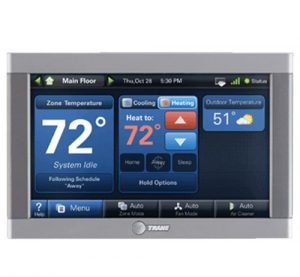As the world shifts toward greener solutions, geothermal HVAC systems are gaining attention as an energy-efficient choice for heating and cooling residential and commercial spaces. These systems are not only environment-friendly but also provide economic advantages long term.
However, like any other technology, geothermal HVAC has its pros and cons. This article delves into these aspects and compares them with traditional HVAC systems.
Here at BelRed, we prioritize our clients’ comfort and ease. As such, we do our best to educate our customers about our heating and cooling solutions.
For assistance, you may book an appointment at (855) 345-6161 or do it online here.
What are Geothermal HVAC Systems?
Geothermal HVAC systems leverage the Earth’s consistent subsurface temperature to provide heating and cooling for a building. They use a series of underground pipes, known as a ground loop, and a heat pump to exchange heat between your home and the Earth.
How Do Geothermal HVAC Systems Work?
Geothermal HVAC systems function based on the principle of heat exchange. During winter, the system extracts heat from the ground, amplifies it via a heat pump, and distributes it throughout your home.
Conversely, in the summer, the system removes heat from your home and disperses it into the ground, thereby cooling your house.
The ground loop, which contains a water-based solution, facilitates this heat exchange process. It absorbs heat from the Earth in winter and dissipates heat back into the ground in summer.
Since the Earth’s subsurface temperature remains relatively constant throughout the year, this system operates efficiently in any season.
What are Traditional HVAC Systems?
Traditional HVAC systems are the standard heating and cooling mechanisms found in most homes. These systems typically consist of a furnace or boiler for heating and an air conditioner for cooling.
They function by burning fuel (usually natural gas, propane, or fuel oil) to produce heat, or consuming electricity to cool your home.
How Do Traditional HVAC Systems Work?
In heating mode, traditional HVAC systems burn fuel to produce heat, which is then distributed throughout the home using a network of ducts.
The cooling mechanism involves an air conditioner or a heat pump extracting heat from the home and expelling it outside, thus lowering the indoor temperature.
Geothermal vs Traditional HVAC Systems: Pros, Cons, and Features
To gain a comprehensive understanding of the advantages and disadvantages of geothermal and traditional HVAC systems, it’s essential to compare them across various aspects. Below is a quick comparison of geothermal vs traditional HVAC systems based on the following:
- Energy source
- Efficiency
- Installation costs
- Operating costs
- Lifespan
- Environmental impact
Here’s a quick chart for your reference:
| Categories | Geothermal HVAC Systems | Traditional HVAC Systems |
| Energy Source | Renewable energy from the earth | Fossil fuels and electricity |
| Efficiency | High efficiency (400-600%) | Moderate efficiency (78-96% for gas furnaces, up to 300% for heat pumps) |
| Installation Cost | High initial cost | Low to moderate initial cost |
| Operating Cost | Lower long-term operating cost | Higher long-term operating cost |
| Lifespan | Longer lifespan (20-25 years for indoor components, 50+ years for ground loop) | Shorter lifespan (15-20 years) |
| Environmental Impact | Low impact (Reduced CO2 emissions) | Higher impact (Increased CO2 emissions due to combustion) |
Energy Source
Geothermal HVAC systems use a renewable energy source – the steady temperature of the earth below the surface. The system harnesses this geothermal energy to heat and cool your home, reducing dependence on fossil fuels.
On the contrary, traditional HVAC systems rely on fossil fuels like natural gas, oil, or propane for heating. For cooling, these systems require electricity, usually generated from non-renewable sources.
Efficiency
Geothermal HVAC systems boast exceptional efficiency. They can deliver 4 to 6 times the energy they consume, translating to an efficiency of 400-600%. This is because they merely transfer heat instead of burning fuel to generate it.
Meanwhile, traditional HVAC systems are less efficient. Gas furnaces, a common choice for heating in traditional systems, typically have an efficiency range of 78-96%. Heat pumps used for cooling and heating in traditional systems can reach efficiencies of up to 300%.
Installation and Operating Cost
The initial cost of installing a geothermal HVAC system is high due to the complexity of setting up the ground loop system. However, once installed, these systems offer significantly lower operating costs due to their high efficiency and the relatively low cost of the energy they use.
In contrast, traditional HVAC systems come with a lower installation cost but higher operating costs. These costs are primarily due to the ongoing fuel costs and lower efficiency of these systems.
Lifespan
Geothermal HVAC systems have a longer lifespan compared to traditional ones. The indoor components typically last 20-25 years, and the ground loop can last over 50 years. This longer lifespan means fewer replacements, leading to cost savings in the long term.
Conversely, traditional HVAC systems have a shorter lifespan, typically lasting between 15-20 years. Consequently, homeowners may have to replace these systems more frequently, leading to higher long-term costs.
Environmental Impact
When it comes to environmental impact, geothermal HVAC systems have a significantly lower footprint. They produce fewer greenhouse gasses as they do not burn fossil fuels.
Traditional HVAC systems contribute more to greenhouse gas emissions due to the combustion of fossil fuels for heating and electricity production for cooling. Therefore, geothermal systems are the greener choice for heating and cooling needs.
Installation and Maintenance of Geothermal HVAC Systems
Installing and maintaining a geothermal HVAC system is a long-term commitment that involves careful planning and regular upkeep. Allow us to break down each process for you:
Installation Process
Step 1: Site Evaluation
The first step involves a thorough evaluation of your property to assess its suitability for a geothermal system. This includes checking the size of the area, the type of soil, and the availability of ground or surface water.
Step 2: System Design
Based on the site evaluation, a customized geothermal system design is created. It includes determining the size of the heat pump unit, the layout and depth of the ground loop, and the integration with existing ductwork or other distribution systems.
Step 3: Excavation and Loop Installation
After the design is finalized, the next step is to excavate the area where the ground loop will be installed. The loops are then laid out and buried, with careful attention to maintaining the designed loop configuration.
Step 4: Heat Pump Installation
After the loop installation, the heat pump unit is installed indoors and connected to the ground loop system. This process must comply with all local building codes and safety standards.
Step 5: System Testing
The geothermal HVAC system is tested to ensure it is functioning correctly. This includes checking the fluid pressure in the ground loop, the electrical connections to the heat pump, and the overall operation of the system.
Maintenance Process
Step 1: Regular Visual Checks
Homeowners should perform regular visual inspections of the system components, especially the heat pump unit. Look for any signs of leaks, unusual noises, or other anomalies.
Step 2: Annual Professional Inspection
Hire a professional once a year to inspect the entire system. This ensures that any potential issues are spotted and rectified early, maintaining the system’s efficiency and lifespan.
Step 3: Biennial Loop System Check
The ground loop system should be checked by a professional every two years. This involves inspecting the fluid pressure and recharging the loop, if necessary.
Step 4: Ductwork Maintenance
Just like traditional HVAC systems, geothermal systems also need regular ductwork maintenance. Ensure ducts are cleaned and sealed properly to avoid energy losses.
Step 5: Periodic Filter Replacement
Regularly replace or clean filters in the system according to the manufacturer’s recommendations to maintain optimal performance.
Improving HVAC Efficiency in Your Home
Efficiency is key when it comes to HVAC systems. An energy-efficient system not only reduces energy consumption and lowers utility bills, but also contributes to a more sustainable future.
Upgrading to a geothermal HVAC system can be a significant step toward this goal. However, the effectiveness of this technology is largely determined by professional installation and maintenance.
While the principles of a geothermal HVAC system might be simple, the process of installing such a system is complex and requires technical know-how and precise execution.
The site evaluation, design of the system, digging and burying of the loop, installation of the heat pump, and final testing all need to be carried out by trained professionals.
A poorly installed geothermal HVAC system can result in reduced efficiency, more frequent repairs, and a shorter system lifespan.
Routine maintenance is another crucial aspect of maintaining the efficiency of a geothermal HVAC system.
Regular visual checks by homeowners coupled with annual and biennial professional inspections can ensure the system remains in optimal working condition for many years.
Professionals can spot and rectify potential issues before they become serious problems, maintaining the system’s efficiency and prolonging its lifespan.
Elevate Your Home’s Energy Efficiency with BelRed
Making the switch to a greener, more efficient HVAC system has never been easier. With BelRed, you gain a partner with expertise in professional heat pump installation, repair, and maintenance services.
Our certified professionals are ready to guide you through the process, ensuring your transition to a geothermal HVAC system is seamless and efficient.
Don’t just upgrade—transform your home into an energy-efficient haven with our customized geothermal solutions. Contact us today for a consultation!







